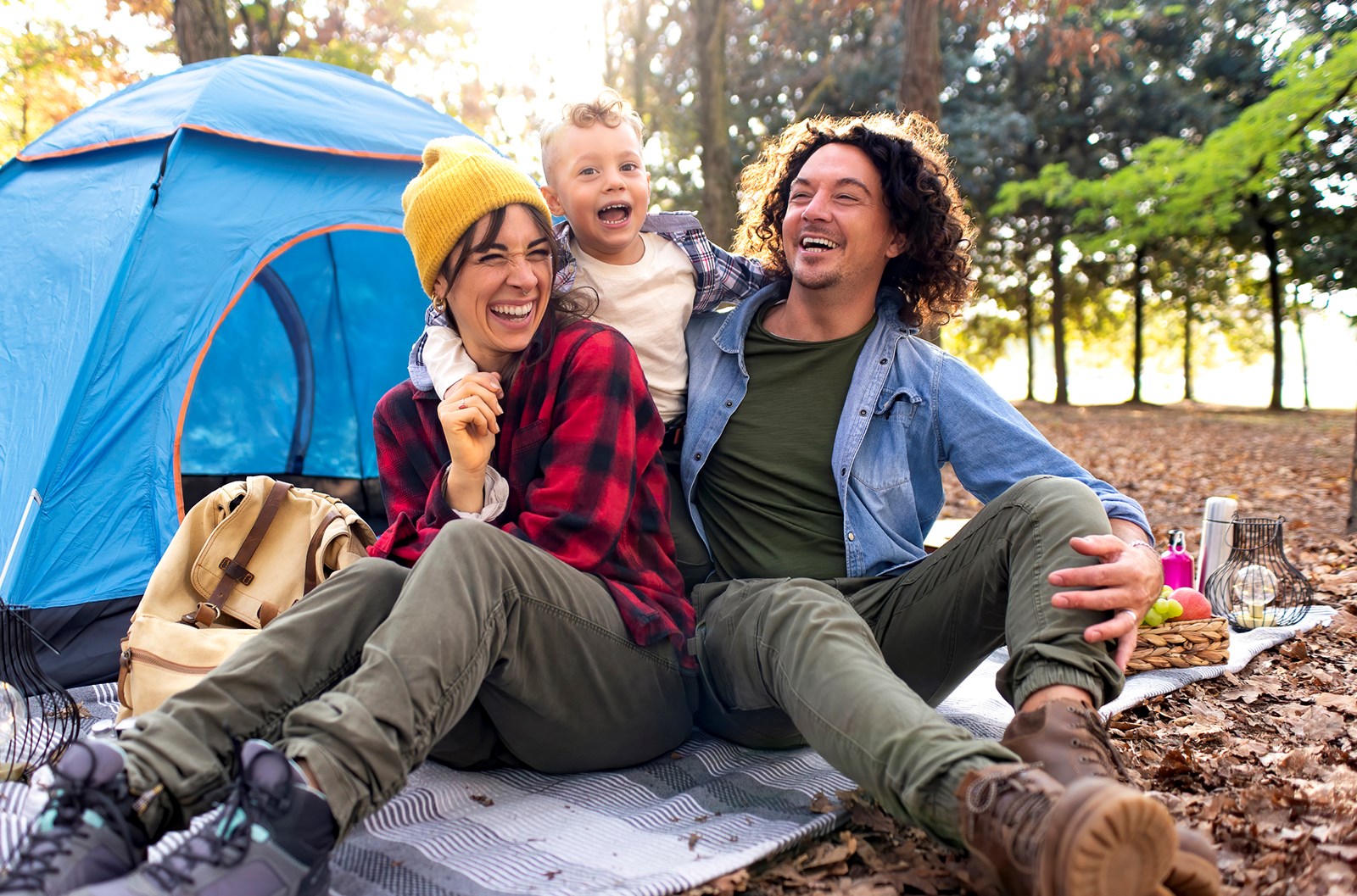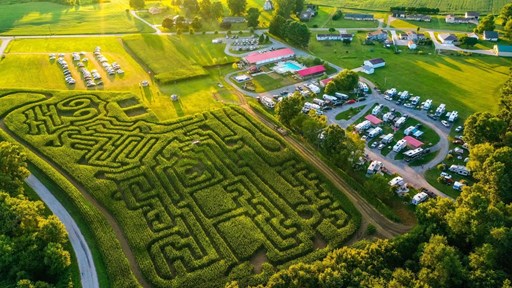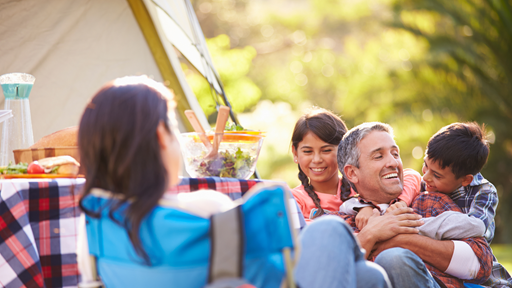Tent Packing Tips
Tent camping is a classic, family-friendly activity perfect for those who enjoy the great outdoors. When you go tent camping, you will need specific things to ensure your safety and comfort. Knowing which items are essential and which are optional will help you create the most useful packing list. Learn how to pack lightly to camp in a tent.
Why Go Tent Camping?
Many campers swear by the tent. Tent camping is the best way to sleep under the stars surrounded by chirping crickets, croaking frogs or babbling brooks. If you want to feel closer to nature — and the people with you — tent camping is the perfect option. It gives you a chance to unplug, get plenty of fresh air and connect with those around you. Tents also offer unmatched versatility and affordability as an alternative to pricey hotels. Nature-enthusiasts and frugal travelers alike prefer tents.
How to Pack for Tenting
Knowing what to bring along will make your tent camping experience much more enjoyable — your tent packing ideas should account for space limitations. The following tips for tent packing will help you create a complete checklist as you prepare for your camping adventure. Some items are must-haves while others are optional.

The Essentials
Before you set out to go camping, make sure you have all of the essentials — items that will keep you safe and cozy during your trip. Here are the most important things to bring along when tent camping:
1. Tent
Of course, tent camping requires a tent. When choosing a tent, factors you may want to consider include:
- Size: Your tent needs to be big enough to fit each camper’s sleeping mat or mattress and gear. It should also have some leftover room for moving around.
- Privacy: If multiple people are sleeping in the tent, they may want some privacy. You can find tents with partitions and separate entrances.
- Shape: Think about whether you would prefer a cabin or dome-style tent, each of which offers different advantages.
- Setup: The ease of setup is another factor to remember. It may require more than one person to set up a tent, especially a large tent. If you’re tent camping by yourself, make sure you have a tent you can set up on your own.
- Special features: Different tents offer various features, like vestibules or mesh roofs. Consider which additions will enhance your trips.
2. Sleeping Bag
Another essential tent camping item is a sleeping bag, which offers the comfort and warmth you need for a good night’s rest. Sleeping bags come in all shapes and sizes, so choosing the right one will take a little bit of research. The shape, dimensions and temperature limit rating are all factors to consider. Research the weather and conditions you might come across, and reflect on your personal preferences.
3. Water Bottles
Water bottles are another must-have. Staying hydrated is crucial for any camping trip, especially if you plan on filling your day with activities like hiking, boating and swimming. Opt for reusable bottles rather than disposable plastic bottles for a more eco-friendly camping trip. Reusable water bottles are also ideal for light tent packing since you won’t have to lug around enough disposable bottles to last through your trip.
While it may seem inconsequential, a good-quality reusable water bottle can make a big difference. The best choice will be a well-insulated, stainless steel water bottle with a carabiner clip. The stainless steel insulation will keep your cold drinks cold and your hot drinks hot — having something cool to sip during a hot day is just as heartening as sipping a hot drink on a cool night. Additionally, having a clip you can attach to your backpack or belt loop offers welcome convenience during activities.
It’s a good idea to get everyone in your group two bottles in a designated color. Color-coding will make it easier to remember whose bottle is whose, and having two bottles per person will ensure everyone stays hydrated. You could also use one bottle for cold drinks and one for hot drinks.
4. Mat, Mattress or Cot
Something comfortable to sleep on will make your trip much more enjoyable. Most campers use either a sleeping pad, cot or air mattress, each of which offers unique advantages:
- Cots: Cots are small, transportable beds. A cot will elevate you off the ground while you sleep, which is ideal for rugged or damp conditions. On the other hand, cots can be less comfortable than other options and may not offer the best heat preservation.
- Air mattresses: Air mattresses provide bed-like comfort as well as affordability, and their compact nature allows for easy packing. The downside is that air mattresses can deflate overnight or become unusable if punctured. They also require a pump to inflate, which may run on either batteries or electricity — a nonfunctional pump will leave you without a bed.
- Sleeping pads: Sleeping pads are a popular option, providing a cushy and insulated surface to lie on. While a sleeping pad will be easier to set up than an air mattress or cot in most cases, it may occupy more packing space. You can elevate a sleeping pad onto a hammock or cot to keep you off of the ground.
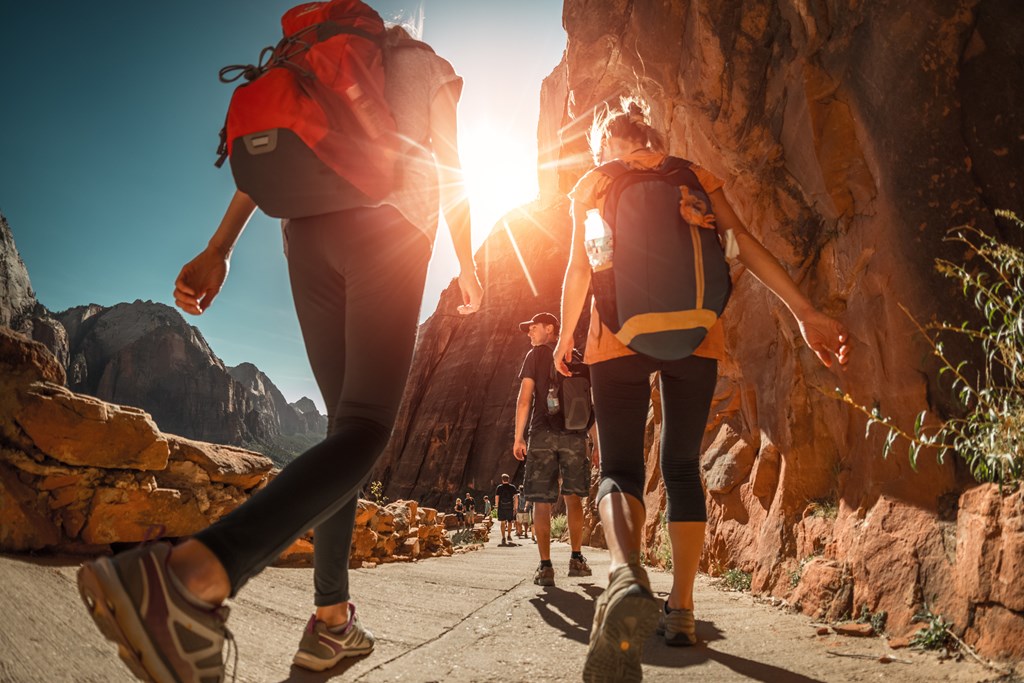
5. Backpack
Another essential item is a backpack — one per camper, at least. Backpacks allow you to bring important items along with you during activities, such as:
- Water bottles.
- Granola bars or other snacks.
- Flashlights.
- Maps.
- A compass.
- A change of clothes.
- A jacket.
- A first-aid kit.
- An emergency tarp or shelter.
- Sunscreen.
- Bug spray.
- Multitools.
- Lighters and fire starters.
- Activity-specific gear.
Choosing a Backpack
Picking a backpack is another vital consideration. A high-quality backpack allows you to focus on the activity at hand, rather than causing distracting discomfort or inconvenience. Here are some factors to note when choosing a backpack:
- Capacity: Think about all the things you may need during your planned activities. For instance, if you want to go fishing, you’ll need to pack fishing rods and a tackle box along with the items listed above. Make sure your backpack has adequate capacity.
- Framing and support: Backpack internal or external framing will support the load within, taking pressure off your back and keeping you balanced. Frameless backpacks are good for short hikes or activities during which you can slip your backpack off, but framed backpacks are a must for long or challenging hikes. The straps impact the weight distribution, as well — load-lifter straps take some of the weight off of your lower back.
- Ventilation: Mesh back panels and ventilation channels will help keep you cool as you work up a sweat. If you plan on camping during hot weather, make ventilation a priority.
- Pockets and compartments: Backpacks with many different pockets and compartments are ideal, allowing easy access to what you need when you need it. If all you have is one big compartment, you’ll have to dig through to find small objects. Instead, choose a backpack with plenty of internal and external pockets of various sizes.
- Waterproofing: Another vital feature is waterproofing. You never know when it might start to drizzle, and waterside activities are bound to result in damp backpacks. Choose a backpack with good waterproof material and secure openings. You might want to seal away valuables, like your cell phone or wallet, in plastic baggies.
- Fit: You will also want to think about a backpack’s size, shape and overall fit. The right fit makes a backpack much easier to wear. You can find gender and age-specific backpacks to maximize wearability.
6. Flashlights and Lanterns
Tent camping also calls for flashlights and lanterns. When the sun goes down, you’ll need light sources to help you navigate your environment. Flashlights are ideal for walking from one point to another, like finding your way from your tent to the restroom. They can also help you locate your belongings in your bags. Lanterns are better for placing in a set location, like on your site’s picnic table. Be sure to pack several of each in case of malfunctions.
7. Meals and Cooking Supplies
You’ll also need to bring enough food to last through your trip, along with the tools required to prepare it. Campfire cooking leaves plenty of room for creativity, so be sure to preplan what meals you want to make. Some cooking gear you might need will include:
- Aluminum foil.
- A foldable grill grate.
- Cast iron pans.
- Skewers.
- Pie or hot sandwich-makers.
- Utensils, bowls, cups and plates.
A helpful cooking tip is to wait until your fire has produced white-hot coals, which are better to cook over than open flames. Flames can result in unevenly cooked food with burnt and cold spots, while hot coals provide slow and even roasting.
8. Batteries
Tent camping might require several battery-powered tools, including flashlights, lanterns, air mattress pumps and navigational gadgets. Extra batteries are an absolute must. Remember to pack plenty of batteries in appropriate sizes. Check that your extra batteries are not expired.
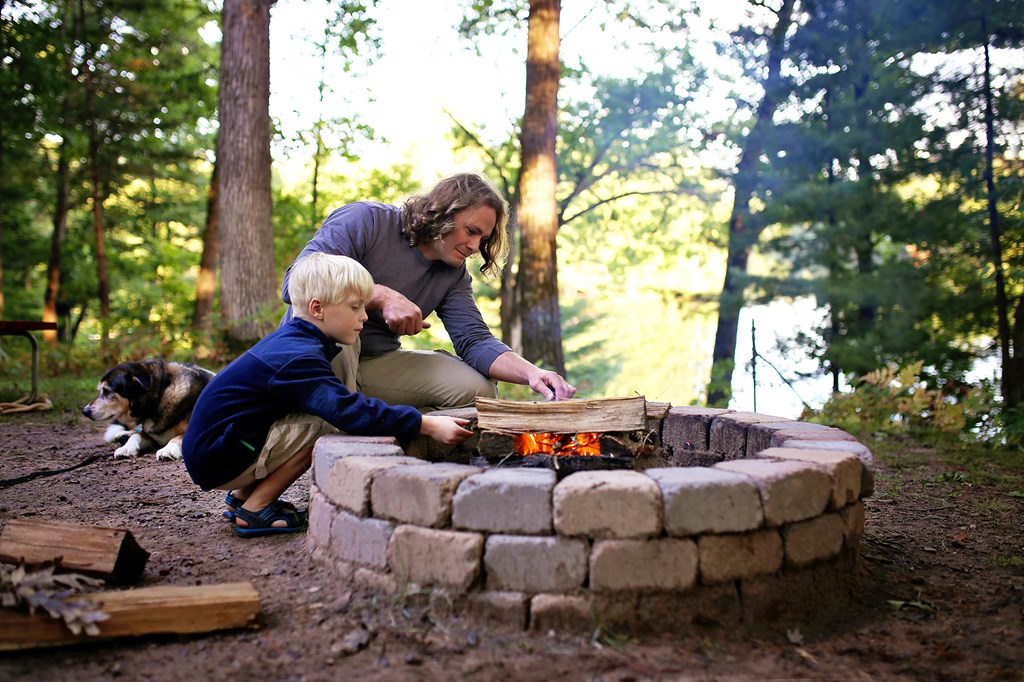
9. Fire Starters
Some kind of fire starter is crucial for tent camping. Starters make it much easier to get a fire going, especially in non-ideal conditions. It’s also a good idea to bring fire starters with you when you leave your campsite, in case of an emergency. You can buy fire starter packs made of natural materials, or you can create your own fire starters:
- Fill an empty egg carton with dryer lint or cotton balls.
- Pour melted wax into each cup.
- Let it dry.
- Cut out each cup for individual fire starters.
10. First-Aid Kit
Last but certainly not least on the essentials list is a first-aid kit. When you’re out enjoying nature, you might not have immediate access to the same supplies you would have at home. Be sure to bring at least one secure and portable first-aid kit with:
- Various bandages.
- Gauze pads.
- Cotton swabs.
- Disposable gloves.
- Tweezers and scissors.
- A whistle.
- An emergency blanket.
- Ointments.
- A thermometer.
- Pain relievers.
- Disinfectant wipes.
Other Considerations
Once you have all of the essential items, you can complete your packing list with optional items. Here are some nonessential things you might want to take along on your tent camping trip:
1. Doormat
Some campers like to place a doormat by the tent’s entrance. It provides a place to take off your shoes, keeping as much mud and dirt outside the tent as possible. It will also make your campsite feel more like home.
2. Cooler
Depending on what food items you bring, a cooler might be essential for safe food storage. Otherwise, a cooler will maximize your comfort and convenience while tent camping. You can use it to keep your drinks icy cold and refreshing.
3. Beach Towels
If you plan to go swimming or boating, you might want beach towels for drying off or lying on the ground. Even if water-based activities aren’t on your to-do list, you could use a beach towel to cover a dewy seat or wipe away sweat. A beach towel will come in handy in many different ways.
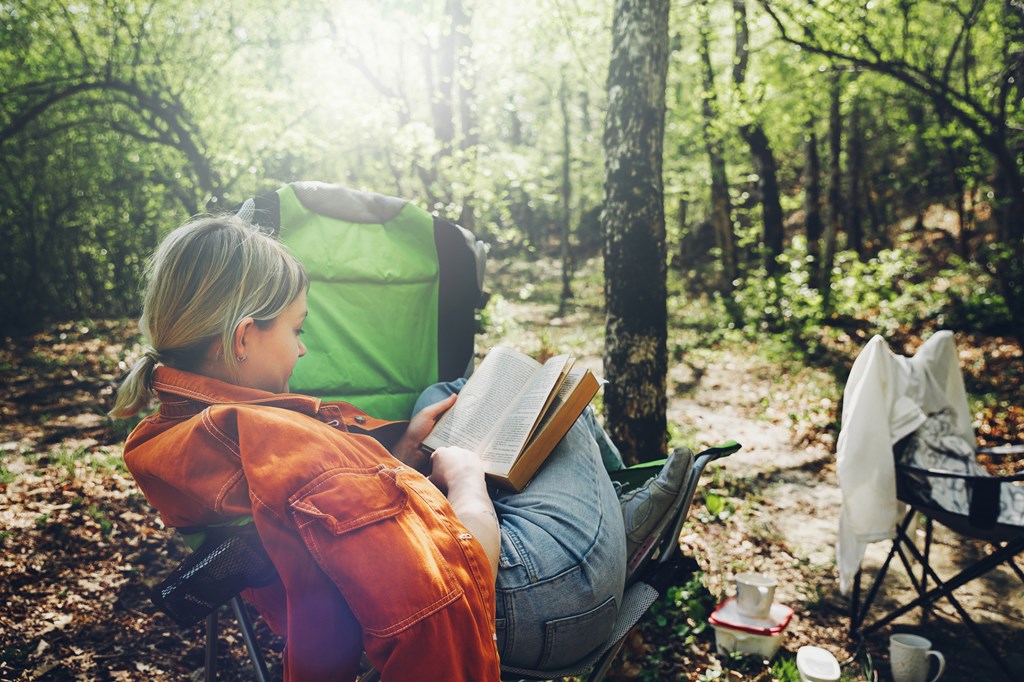
4. Books and Games
Part of the fun of camping is unplugging from the electronic devices you use every day. With that in mind, you might want to pack other sources of entertainment, like books to read or games to play. When choosing what games to pack:
- Keep it simple: When tent camping, small board game pieces are likely to get lost. You may find it best to bring simple games with minimal parts and pieces.
- Get creative: Bring games you can get creative with — for instance, a simple deck of cards can lead to dozens of different games.
- Consider space: Think about how much space your game choices will take up. Ensure you have enough room for all of the essentials before you start packing games.
5. S’mores Pokers
Some would argue the defining feature of an ideal camping trip is a chocolate-dripping s’more at the end of the day. If you agree, be sure to bring along s’mores pokers for the perfect golden brown marshmallow, along with the three simple ingredients — marshmallows, graham crackers and chocolate. You can take your s’mores to the next level by including your choice of extras, such as:
- Caramel topping.
- A sprinkle of sea salt.
- Hazelnut spread.
- Peanut butter cups.
- Cookies rather than graham crackers.
- Strawberry slices.
Cook your s’mores however you like them for the perfect ending to an adventure-filled day of tent camping.
Plan Your Next Camping Adventure at KOA!
Tent camping is a fun-filled way to spend a vacation, especially if you pack all the right things. Always bring the essential items — like an appropriately sized tent, a backpack and a first-aid kit. Once you have all of the most important things, you can pack optional items to make your trip more cozy and enjoyable.
Before you can start packing, you need a camping destination. Choose Kampgrounds of America for your next camping adventure. KOA is the most recognized name in camping, with over 500 locations across North America. The site managers and owners are trained campground professionals who are dedicated to making your experience the best it can be. All campers are welcome at KOA — no membership required. Reserve a site at KOA today!
About the Author: Kampgrounds of America
Kampgrounds of America is the largest system of open-to-the-public campgrounds in the world, with over 500 locations across the United States and Canada. Founded in Billings, MT in 1962, KOA’s family of campground brands – KOA Journey, KOA Holiday and KOA Resort – today serve more than a million camping families each year. KOA is dedicated to “connecting people to the outdoors and each other” by providing people with a variety of camping experiences and the information they need to make the most of their camping trip. Read more of their camping and travel resources by visiting KOA.com/blog.



















